Review for Dragon Ball Z: Season 1
Introduction
This is it! The big one! The one all anime fans have been waiting for. Dragon Ball Z finally makes it to the UK... again. It's the holy grail of anime, the long running shonen action series that sparks off nostalgia in most anime fans today, without which there would be no Naruto, no Bleach, and no One Piece. The Dragon Ball franchise has been a mainstay of television schedules and DVD distributors around the world, and it's been a matter of some consternation that aside from a smattering of movie releases from Warner Vision, and the television broadcasts from around a decade ago, Dragon Ball hasn't seen a proper home video release in the UK. But Toei, who own the Dragon Ball franchise, are very particular about how their product is distributed, while it's taken the move away from single volume releases to boxsets to allow long running anime series to work in the UK. Even then it's not a sure thing, and Manga Entertainment is one of the few labels to make a success at it with the aforementioned Naruto and Bleach. We're finally in a position to see Dragon Ball Z come to the UK. Over the next eighteen months or so, Manga Entertainment are going to release all 291 episodes of Dragon Ball Z in 9 boxsets.
And it might just be too late. Dragon Ball Z is a vintage series now, one that debuted in 1989, and itself a sequel to the 153 episode long Dragon Ball (which we aren't getting). These two series adapt the Dragon Ball manga, with Dragon Ball adapting the first 17 volumes, and the rest adapted by Dragon Ball Z (If you need to catch up on the plot, see if your local library carries the manga), and it also spun off several movies, and the Dragon Ball GT series. The series are regular mainstays in Japan, and most recently, the Dragon Ball Z series has been re-mastered, and re-edited, removing the filler and keeping the manga adapted material, drastically editing the show down into something more concise and fast flowing. Dragon Ball Kai has recently been released on DVD and Blu-ray.
That's nothing compared to how it has sold in the US! It was a show that was licensed in the mid-nineties, when anime on TV was still a viable concern, and it was dubbed and edited for TV broadcast there. The dubbing and the licensing bounced around various companies, with various different edited versions for broadcast and cable. The whole kit and caboodle didn't settle down until the licence came to Funimation, and they dubbed it anew in-house. They first released this show in single volumes, over fifty of them. The Dragon Ball Z series was originally animated on 16mm film, at the 4:3 aspect ratio, and that's how it originally aired in the West. Then in 2006, Funimation announced that they would re-release the Dragon Ball Z series in boxset form, but this time they would re-master the image for widescreen presentation, and offer a 5.1 surround audio experience. In 2009, they announced another release, the so called Dragon Boxes, which would have the original aspect ratio, and a far more sympathetic restoration of the image. They've since then also released the Dragon Ball Kai sets on DVD and Blu-ray. Until very recently, you could say that Funimation is a company that's been financed on the profits of the multiple iterations of the Dragon Ball franchise, as Funimation have also released the original Dragon Ball, Dragon Ball GT, and the movies.
Most recently, they returned to the Dragon Ball Z cash cow again, announcing a frame by frame restoration of the original cel anime for a complete series Blu-ray release. And it's here that the problems arose. They've had to suspend production of the Blu-ray, citing costs of and difficulties with the restoration, but it may just be that after all this Dragon Ball, franchise fatigue has finally set in.
None of this ought to be a problem for Manga Entertainment, as Dragon Ball as a franchise really hasn't existed in the UK. It's the first time for them to release the show, and they have a large fanbase who may still be nostalgic for that long ago television airing to invest in the series, as long as they didn't get tired of waiting and import the various US releases over the last eight years. Except that Manga have the most controversial version of Dragon Ball Z to sell, that 2006 release that was optimised for the modern television audience, or horrendously butchered depending on your point of view. I wouldn't be half as negative about approaching this release if they had the Dragon Boxes instead. Actually I would be, as it still preys on my mind that Dragon Ball Z is nearly 25 years old now, and the one time I encountered it, two of those movie releases from Warner Vision, I had very few positive feelings for the show at all. I have to remember watching those discs with no context to the story couldn't have presented it in the best light, while the horrendous English dub (I think it was from Singapore) could only have made things worse. At least this time I'm starting from the beginning, sort of, and the discs get the presentation that anime fans have come to expect. So, keeping an open mind, and hoping my brain doesn't fall out, I step back into the world of Dragon Ball Z.
It's been five years since the events of Dragon Ball. Goku has settled down with Chichi, and together they have a son, Gohan, the apple of their parents' eyes. Gohan is a little timid, and spoiled by a mother who would much rather have a genius in the family than another martial artist saviour of the universe. Not that there is much saving to be done. The world is at peace, and even Piccolo's behaving himself.
Then suddenly, that peace is shattered when aliens arrive, or rather one alien, Raditz, a Saiyan, looking for his brother Kakarott. The Saiyans are the most brutal race in the universe; their trade is attacking planets, stripping them of the inhabitants, and selling them off at a profit. The one saving grace is that a stellar disaster wiped most of them out. There are only three left in the universe, four counting Kakarott, and Raditz is looking for his kid brother to recruit him to his nefarious cause. It turns out that Kakarott is actually Goku, and Goku forgot about his Saiyan heritage when he fell on his head as child. When Raditz learns that Goku has a son, whose Saiyan powers may be enhanced by his Earthling blood, the need to coerce both his relatives to his cause becomes intense, and a battle to the death ensues. But that's only the beginning, for there are two more Saiyans out there, and they now know of ripe little Earth's existence. They're coming to wipe out the inhabitants of Earth, and there's only a year to train up to be ready for them. Even little Gohan will have to undergo training. Training will be hard for Gohan, who's never wanted for anything his four pampered years. It'll be even harder for Goku, who's dead. Time to start gathering the Dragon Balls again.
The 39 episodes of Dragon Ball Z Season 1 are collected across 6 discs from Manga Entertainment.
Disc 1
1. The New Threat
2. Reunions
3. Unlikely Alliance
4. Piccolo's Plan
5. Gohan's Rage
6. No Time Like The Present
7. Day 1
Disc 2
8. Gohan Goes Bananas!
9. The Strangest Robot
10. A New Friend
11. Terror on Arlia
12. Global Training
13. Goz and Mez
14. Princess Snake
Disc 3
15. Duelling Piccolos
16. Plight of the Children
17. Pendulum Room Peril
18. The End of Snake Way
19. Defying Gravity
20. Goku's Ancestors
21. Counting Down
Disc 4
22. The Darkest Day
23. Saibamen Attack!
24. The Power of Nappa
25. Sacrifice
26. Nappa's Rampage
27. Nimbus Speed
28. Goku's Arrival
Disc 5
29. Lesson Number One
30. Goku vs. Vegeta
31. Saiyan Sized Secret
32. Spirit Bomb Away!
33. Hero in the Shadows
34. Krillin's Offensive
35. Mercy
Disc 6
36. Picking up the Pieces
37. Plans for Departure
38. Nursing Wounds
39. Friends or Foes?
Picture
Dragon Ball Z gets a 1.78:1 anamorphic transfer on these discs, which courtesy of Madman Entertainment is a native PAL conversion, with the 4% speedup that implies. It ought to be said that the transfer is a contentious one, so here are three opinions.
Positive
Wahoo! Dragon Ball Z all spruced up for the 21st Century, an era of flat panel TVs and home cinema systems, where everyone watches widescreen and on big TVs, not little square boxes anymore. The 4:3 frame has been scanned from the original 16mm film cels at HD resolution before being cropped to fit the 16:9 aspect ratio. This means that it isn't a case of losing resolution to zooming in, but actually getting as much information across as possible on screen as it's sourced from a higher than SD resolution master. Also 16mm is an inherently grainy medium, much more so than 35mm, and on a large modern television screen that really shows. Digital Noise Reduction has been applied to reduce the grain, and give as clean an image as possible.
Negative
Oh dear God! Is nothing sacred? How many times must we tell you? Original aspect ratio. Original aspect ratio or nothing. It's akin to censorship I tell you, you lose valuable picture information, and the original composition of the creators is wrecked. We don't flip manga anymore, so there's no need for this molestation. And DNR is also a sin, film is meant to be grainy, it's part of the charm, it's like the warmth of vinyl. Take DNR too far, and you begin to lose picture information.
My opinion
Dragon Ball Z just about gets away with being cropped to 1.78:1, and that's coming from an Original Aspect Ratio fiend. It's an enjoyable experience, which only very rarely reminds you that you are missing picture information. Unfortunately, one of the rare instances is at the start of each episode, the hero pose at the end of the opening credits, where poor Muten Roshi gets half decapitated. Much more problematic is the DNR. Having seen the original source material in the extra features, I can see how 16mm is too grainy a medium for modern televisions. Some subtle reduction of grain would have been in order. Alas Dragon Ball Z on these widescreen collections goes too far and eliminates grain completely. Colours are now pristine, flat, and clean, but where there was previously variation in colour, or grading, there's now digital artefacting in the form of smearing. You can see it most obviously in the Serpentine Road sequences atop the clouds. Worse however is that the DNR on occasion erases line art completely. You get character features vanishing for a frame and then reappearing, odd lines doing the same, and on one occasion for poor Kuririn, his whole face. From what I've read, Funimation really started off poorly in this regard with re-mastering Dragon Ball Z and improved as the series went on, so Season 1 ought to be the worst of it.
Incidentally, Toei treat their product like their firstborn child, and manage every aspect of every release of it, worldwide. It's why it's taken so long for it to come out in the UK. So you can be sure that they have signed off on this release, including the audio visual aspects of it.
Sound
You get three distinct options here. The one that I chose is probably the least appealing in technical terms, but long habit always makes me click on the original language track first. Here it's in DD 2.0 mono Japanese, and this one is as mono as it gets, showing its age, and not all that well defined. It's accompanied by a translated English subtitle track. It's adequate, but there was a distinctly different style to anime dubs when Dragon Ball Z was made, and compared to modern anime it seems very quaint.
Then there is the broadcast version option, although it must be stressed that Dragon Ball Z isn't edited in any way for content, if the presence of a very black Russian Roulette gag is any indication. When Dragon Ball Z was broadcast, the original music was deemed as unsuitable for US audience sensibilities, so a completely new score was composed for the show. You can thus watch Dragon Ball Z with this music, and the most recent Funimation dub in glorious DD 2.0 Stereo with a signs only track.
Finally, and really quite appealing is the DD 5.1 option, which has the Funimation dub, but also has the original Japanese music score to the episodes. I gave this a quick spin, and found that the surround audio does a fair bit in giving the show some space, while the stereo track isn't too far behind it in terms of clarity. Both of these tracks blow the Japanese dub out of the water in technical terms. The dub itself is pretty agreeable, what I sampled of it, and it's a lot looser and free flowing than what I am used to. It's also not absolutely faithful to the original script, which makes for some interesting differences.
Extras
Each disc gets a static menu screen, with a jacket picture for when the disc is at rest in some players. You'll also find if you select the Japanese audio stream and English subs, the Japanese titles for the episodes courtesy of voiceover guy are different, longer and filled with spoilers.
There are a handful of extras on disc 6, with the most substantial at just over 5 minutes the Dragon Ball Z: Rebirth featurette, where Steve Franko takes us through the process of converting grainy 4:3 16mm film to the cleaned up, HD sourced, widescreen image that you see on these discs. Given what I have learned about respecting the original creative vision and preserving the original intent, I don't think I ever heard such bare faced... marketing before to promote the 'superiority' of these cropped and DNR'd releases.
There's more marketing in the A New Look featurette, which amounts to a 3 minute trailer for that which you have already purchased.
Finally there are the textless credit sequences. I just noticed. These episodes, especially in their PAL versions are short, at around 23 minutes each. The credit sequences are longer than usual at 1:50 and 1:40 minutes respectively, and each episode begins with a couple of minutes of recap. That doesn't leave a lot of actual episode.
Conclusion
If there has been one thing sorely lacking in the UK anime experience, it's the dirty old man stereotype, the wizened old guy who likes to grope young female flesh, and steal panties. Naruto's Jiraiya is a loose approximation of the trope, but this is one character stereotype that really had its day back in the eighties, exemplified in incarnations such as Ranma's Happosai and Cherry from Urusei Yatsura. Well we finally have the ultimate in dirty old men represented in UK anime, as Dragon Ball Z comes to the UK and with it the lecherous Muten Roshi. For a lot of anime fans, and indeed a lot of UK anime fans, it's Dragon Ball Z that got them into anime in the first place, the original gateway drug. It's one that passed me by as I was stuck in the analogue terrestrial age at the time, so for me Dragon Ball Z has been a wholly new experience, albeit a very retro one, with cheap and cheerful animation even for its 1989 production year.
I'm really not the one to turn to when it comes to appraising vintage shonen anime, as shonen is a genre that I can barely tolerate at the best of times. The moment the fighting tournaments turn on, I turn off, and Naruto is a rare exception that I not only tolerate, but actively enjoy. When I first heard that Dragon Ball Z was coming to the UK, I recalled those poorly dubbed movies from around ten years ago that I reviewed, and I had a combination sinking feeling of disappointment, and dread that I would actually have to review this thing. I would much rather that Manga Entertainment had licensed Urusei Yatsura instead. if they wanted a long running vintage TV show. Anyway, the moment of truth is here, and I have sat and watched my first 39 episodes of Dragon Ball Z, almost as the creators intended it. And it's not that bad. In fact, it's really quite good.
I still have that perverse approach to shonen action shows, in that I shy away from the action, the episode spanning fight sequences, and by far prefer the character development, story arcs, and comedy. It's why I enjoy Naruto, and tire of Bleach. It turns out that Dragon Ball Z tickles me in the right way as well, enough that I can put up with the action sequences, the recaps and the flashbacks. I find that I like the filler material, which would make me the worst possible person to review Dragon Ball Kai, should that ever be released here. Dragon Ball Z comes from the late eighties, adapted from a manga from Akira Toriyama, which may have begun as a loose adaptation of Journey to the West (Monkey Magic), but by this point his 'make it up as I go along' approach to storytelling had turned it into an extended remake of Superman II. Shows from this period aren't exactly known for their depth of character, or the complexity of the narrative. With story and character put to one side, for me Dragon Ball Z's one saving grace is its comedy, which it has in abundance. It's also the daft and zany brand of humour that I particularly enjoy, nothing too deep or intellectual.
If you're worried about having missed the original Dragon Ball, there is very little here that relies on prior knowledge, and the information that you do need is presented as the show goes on in flashback or exposition. The story is simple, with a bunch of super powered fighters, living peacefully on Earth, when an alien arrives to wipe out the inhabitants and sell of the planet to the highest bidder. A desperate fight ensues, where the defenders triumph, but in the process the hero is killed. You don't have to worry about this though, as this is a James Bond universe, where you only live twice. Find the mythical Dragon Balls, summon the dragon Shen Long, and you can wish the deceased back to life. It turns out that the alien has friends, and they're coming to finish the job, and they are even stronger than the first alien. The heroes have a period of a year to train up and get ready for action. It's a Superman versus Zod situation, with Goku cast in the role of Kal-El, abandoned on Earth to become its protector, and Vegeta and his ally Nappa the evil villains. Ironically it's a good thing that Goku is dead, as he can get some super training from the strongest god in heaven, while his son Gohan learns to fight from Goku's former enemy Piccolo.
We have five episodes of introduction to the series and the menace, 16 episodes of training (of which 10 of them, Goku spends running along the back of a giant snake), 14 episodes of battle with the Saiyans, followed by four episodes of set up for the next arc of the story. Whenever there was an extended fight sequence, I found my attention beginning to drift, but the comedy just about drew me back in again. And over half of the show was more narrative and less action, little stories and diversions that entertained more. This collection of episodes encompasses a whole arc, and as such is a nice way to try out the show without having to commit to further episodes. The ending is something of a cliff-hanger though, as the battle with the Saiyans leaves the Dragon Balls destroyed, with no way to restore them, or those who have perished in the fight against Vegeta. It turns out that the survivors will have to go to outer space to find some more Dragon Balls.
I think I missed the boat on Dragon Ball Z, as I really should have watched it 20 years ago to have been part of the zeitgeist. As it is now, it seems quaint, but enjoyable enough to watch. I'm not sure that I would choose to seek it out though, as it has been superseded by much smarter and higher quality, long running anime shows. Still, it is better than Bleach, and better than Yu Yu Hakusho, another long running show that failed to ignite in the UK. If on the other hand you are familiar with the show, and have a nostalgia for the franchise, you are going to love this release.
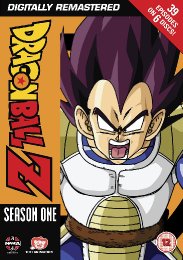
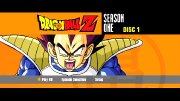
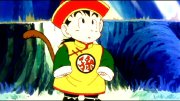
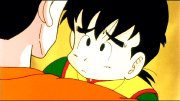
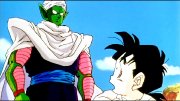

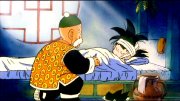
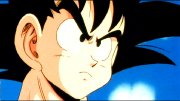
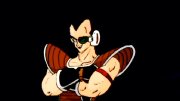
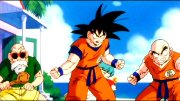


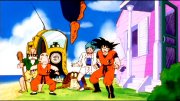
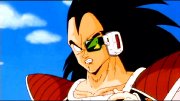
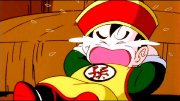
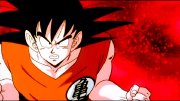

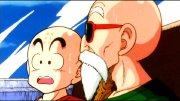
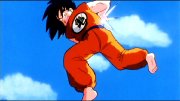

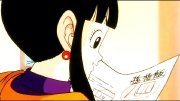
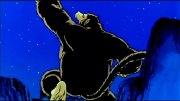
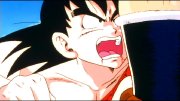

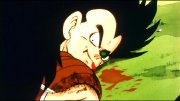
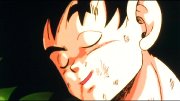
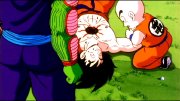
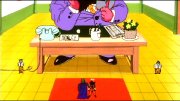
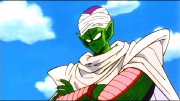

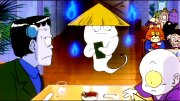















































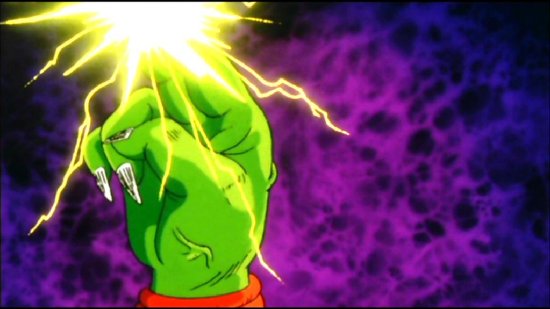




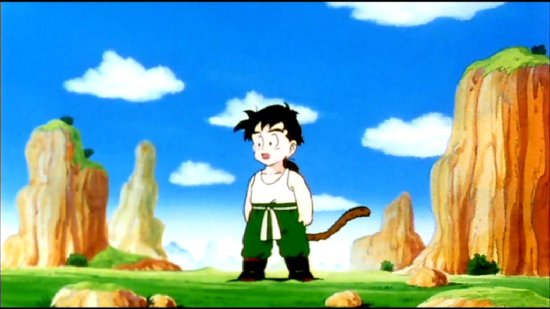

Your Opinions and Comments
Be the first to post a comment!